We transport goods on Euro pallets or Finnish pallets, this is included in the order price. A pallet is a flat wooden or plastic base on which loads are placed. It does not replace packaging, but helps optimize space in the truck so that boxes, crates and bags do not lie haphazardly.
The dimensions of a Euro pallet are 120×80, maximum height is 175-180 cm. That is why the maximum cargo dimensions are 120x80x180 cm.
We transport consolidated cargo, that is, we complete the pallet with dissimilar items. Therefore, to prevent the cargo from being damaged on the road, it is important to pack it in a certain way before placing it on a pallet.
There are two types of packaging: consumer and transport. The first is those bright bags, boxes and containers in which goods are stored in the store. They attract the attention of consumers and protect from dust, but they will not be able to protect the cargo from the dangers that await it on the road. But transport packaging can handle the latter.
Types of transport packaging:
– pallet board (pallet frame);
– sheathing;
– cardboard box;
– bag;
– big bag;
– air bubble film, stretch film and strip tape.
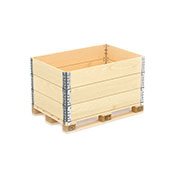 | This is a reusable wooden box for goods with a high declared value that may crumble and break in transit if not securely secured. The cargo is placed on a Euro pallet, secured with loops of several sides to protect it on the sides, and secured with a lid on top. In such a rigid package you can safely transport a crystal chandelier, a batch of printers, audio players or mobile phones. The pallet board is suitable for cargo with dimensions no longer than 120 cm and no wider than 80 cm. The permissible weight is 1250 kg. |
What kind of cargo is it suitable for:
– chandeliers and lamps;
— automobile spare parts;
– electrical goods;
— photographic equipment;
– medical equipment;
— office equipment and equipment.
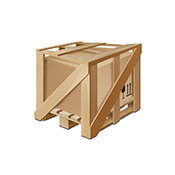 | When the size of the cargo does not allow the use of a pallet side, a lathing can be an alternative. The load is secured on a pallet and secured with a stretch film to give it additional rigidity and stability. Heavy loads, such as cans, plastic kegs, spools of wire, are additionally secured with strip tape. Then a frame of boards is knocked together around the load. Wooden boards do not completely cover the load, but rather surround it with a lattice – hence the name. |
What kind of cargo is it suitable for:
– bicycles and motorcycles;
– technique;
– plumbing;
– furniture;
– cargo of non-standard shape;
– glass and ceramic products.
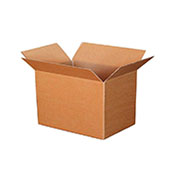 | The box will help to group light, medium-sized cargo so that it does not fall apart on the road, wrinkle, crack or get dirty. If the items inside the box are fragile and can damage each other during road shaking, they are additionally wrapped in bubble wrap or filled with fillers for additional shock absorption. Most often, boxes are used as intermediate packaging. For reliability, they are lathed, or simply wrapped with stretch film and placed on pallets. |
What kind of cargo is it suitable for:
– Stuffed Toys;
– dishes;
– books;
– cloth;
– home textiles;
– records.
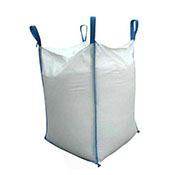 | A good option for small, bulk and soft goods that are not susceptible to mechanical damage. In the bag, cargo will not scatter throughout the body and will not get dirty on the road. |
What kind of cargo is it suitable for:
– animal feed;
– grain;
– mattresses and blankets;
– shoes;
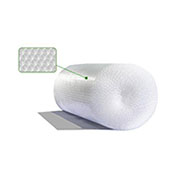 | Typically, film is used as an additional measure of cargo protection. It is used to wrap loads already packed in boxes and secure them with tape to further protect them from road vibrations. |
What kind of cargo is it suitable for:
– Appliances;
– photographic goods;
– monitors;
– dishes;
– sharp objects;
– cargo of non-standard shape with small parts.
Transporting fragile items is always more expensive because they require complex packaging to protect them from possible troubles along the way.
TVs are often packaged in cardboard boxes and lined with foam around the perimeter. The plumbing is tightly tied and lathed. And household appliances and electronics are wrapped in bubble wrap, placed in a pallet board and filled with filler for additional cushioning.
There is no universal solution. Often the composition of the package depends not only on what you are transporting, but also on the length of the route, weather conditions, and neighboring cargo on the pallet. Therefore, entrust the packing of valuable cargo to professionals. In each individual situation, we use all our experience and knowledge to choose the safest way to transport your cargo.
What goods are considered fragile:
– Windshield;
– ceramic tile;
– plumbing;
– household appliances and electronics;
– equipment with mirror or glass elements;
– pumps;
– electrical goods;
– musical instruments;
– dishes.
We are always happy to help our clients pack their cargo correctly. But some senders prefer to do it themselves. We’re not against it, but we do have a few requirements that need to be taken into account before placing loads on pallets.
The packaging must be intact (without holes, rips, peeling tape and other defects due to which part of the cargo “peeks out”). Otherwise, there is a risk of unauthorized access to the cargo.
The packaging must be rigid (If the load presses the bottom of the package, there is a high probability that it will tear).
The packaging must be dry and undamaged (no smudges, oil stains or other traces of moisture).
The load must be securely fixed inside the package (load that rolls freely inside the package should be secured with a special filler or sealed with bubble wrap).
If any of these packaging requirements are not met, there is a high probability that your cargo will reach the recipient damaged or we will be forced to refuse transportation to you.
When collecting cargo on pallets, we try to take into account all possible risks. If the loads on the pallet do not fit tightly enough to each other, we tighten them with strip tape to give the structure additional rigidity. If the pallets are heavy, we additionally fasten them with tie belts. There is no need to pay for this.
Unfortunately, force majeure does happen. Therefore, before you send your cargo, you need to insure it in case of accident, damage or theft. It is important to us that your cargo reaches the recipient safe and sound. And if something happens to him, so that you are compensated for the damage.




